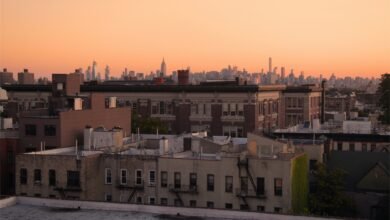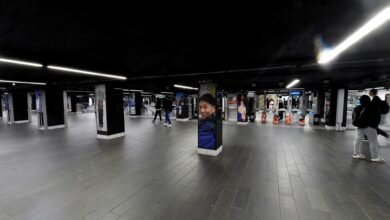
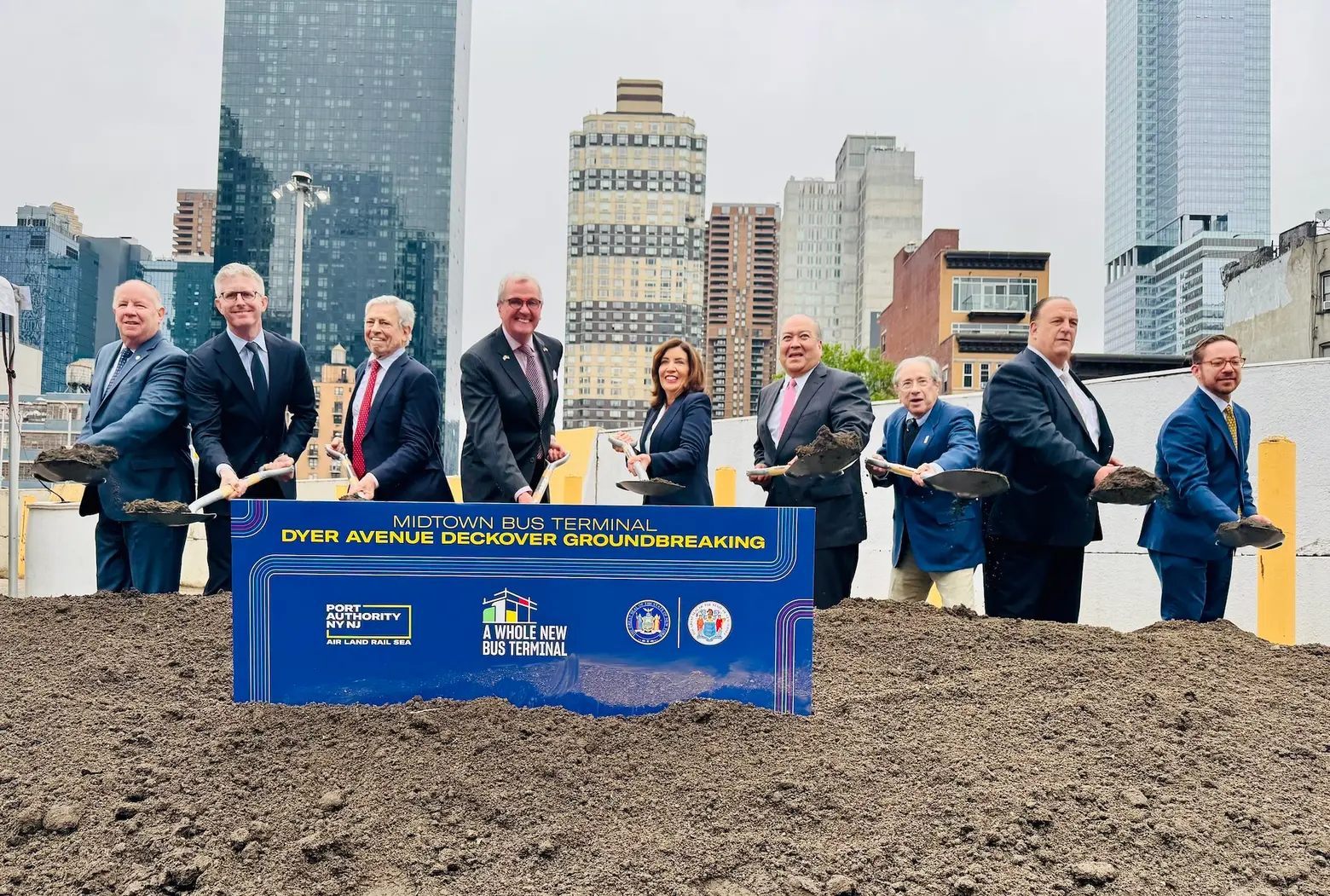
Gov. Kathy Hochul, Gov. Phil Murphy, and the Port Authority of New York and New Jersey broke ground on the Dyer Avenue deckovers. Photo courtesy of PANYNJ on Flickr
Construction began on the first phase of the new $10 billion Port Authority Bus Terminal on Thursday, marking an important milestone for the long-awaited project. Gov. Kathy Hochul and Gov. Phil Murphy joined the Port Authority in a groundbreaking ceremony for the Dyer Avenue deck-overs, which will be used for staging buses during construction and will eventually become a public green space when the new terminal opens. The first phase deck-overs, along with new ramps and a bus storage facility, are expected to be completed by 2028, with the full terminal opening in 2032.
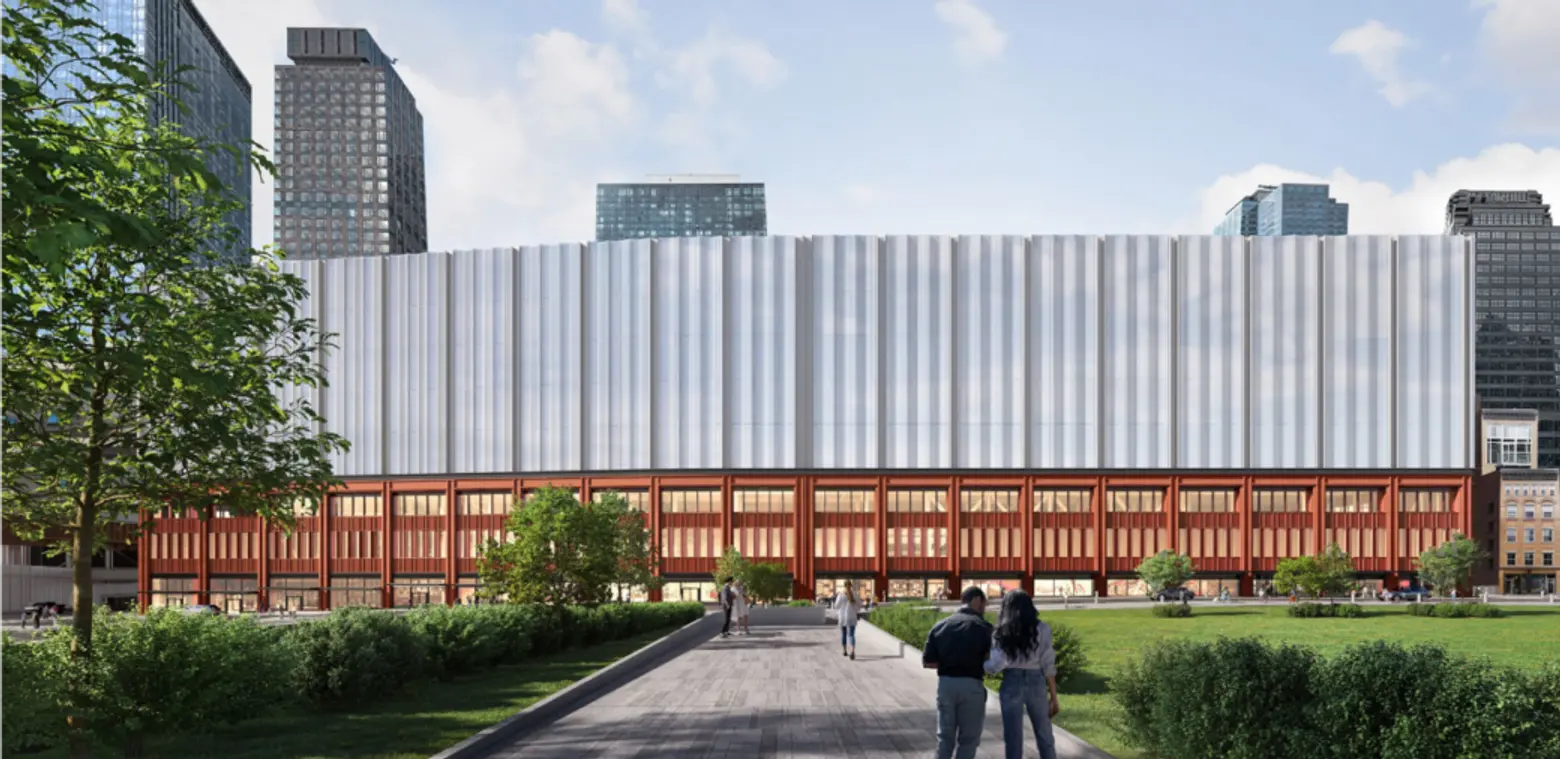
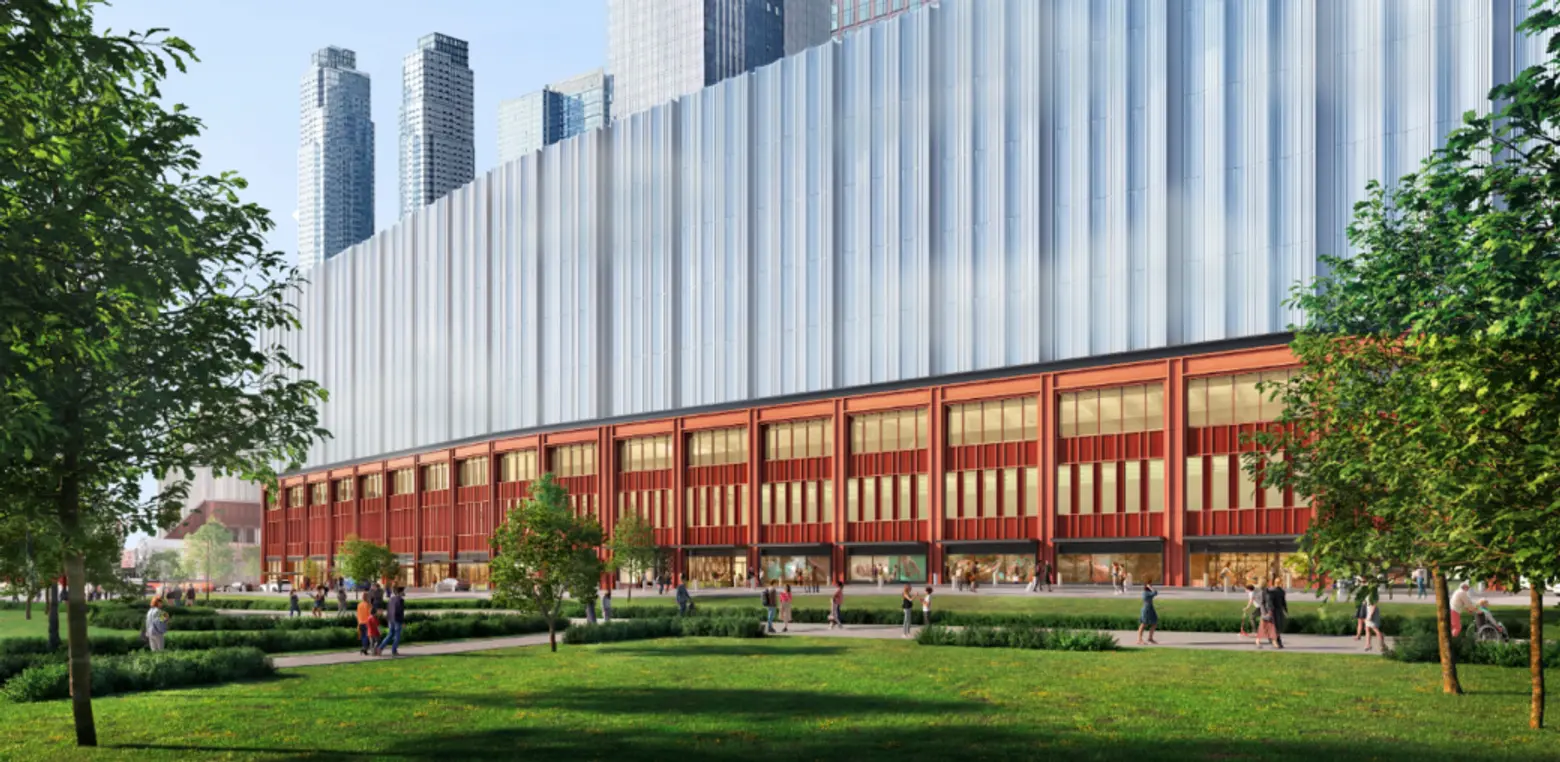
Two new decks will be built over the below-grade portions of Dyer Avenue and the Lincoln Tunnel Expressway. The deck-overs will be used for bus operations and passenger services while the new bus terminal is under construction. When the new hub opens, the decks will be converted into more than 3 acres of publicly accessible open space.
The storage and staging facility will provide a five-story steel structure for buses that use the terminal, reducing the number of buses idling and parked on city streets. During the construction of the new main terminal, the facility will serve as a temporary bus terminal.
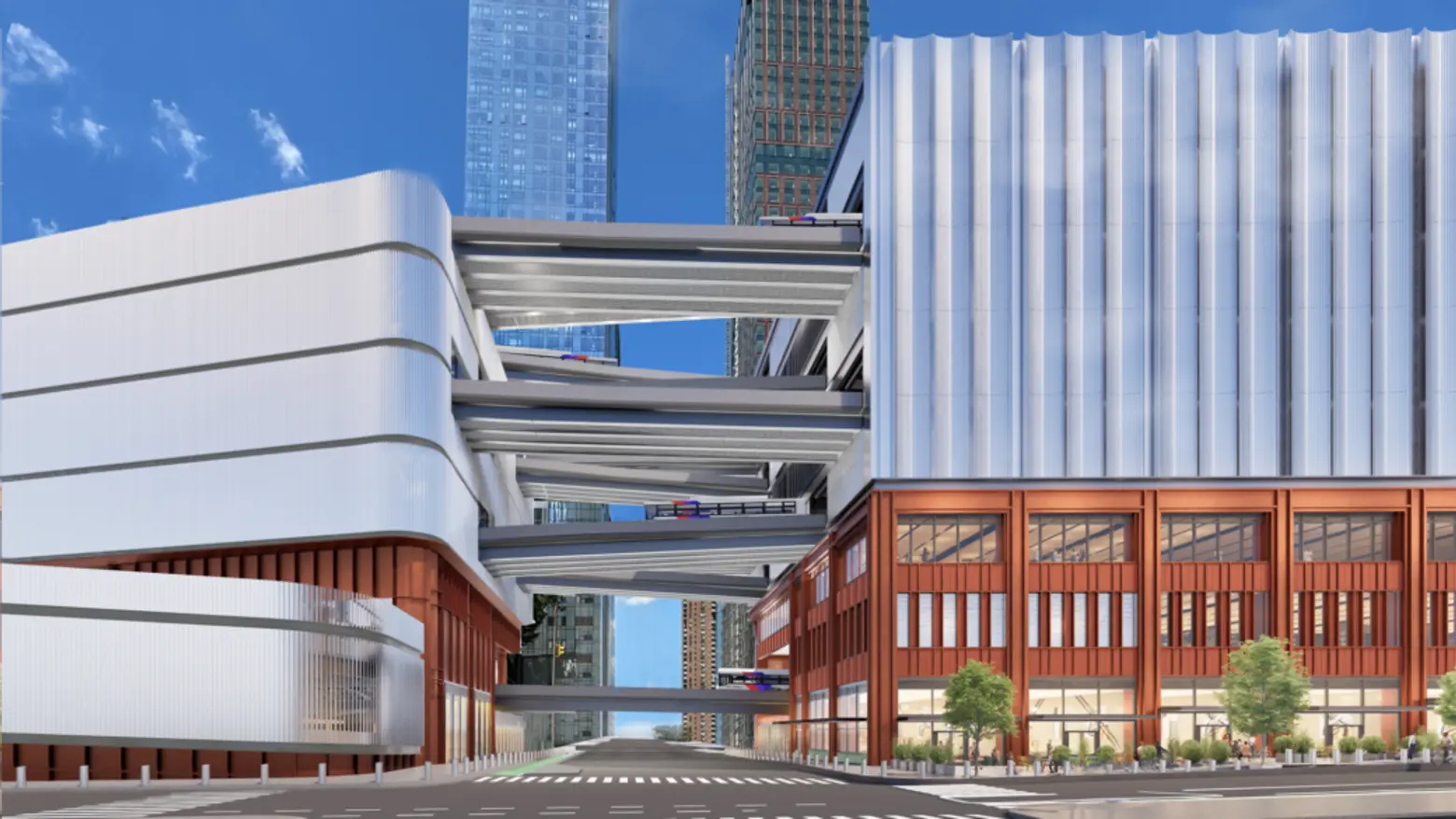
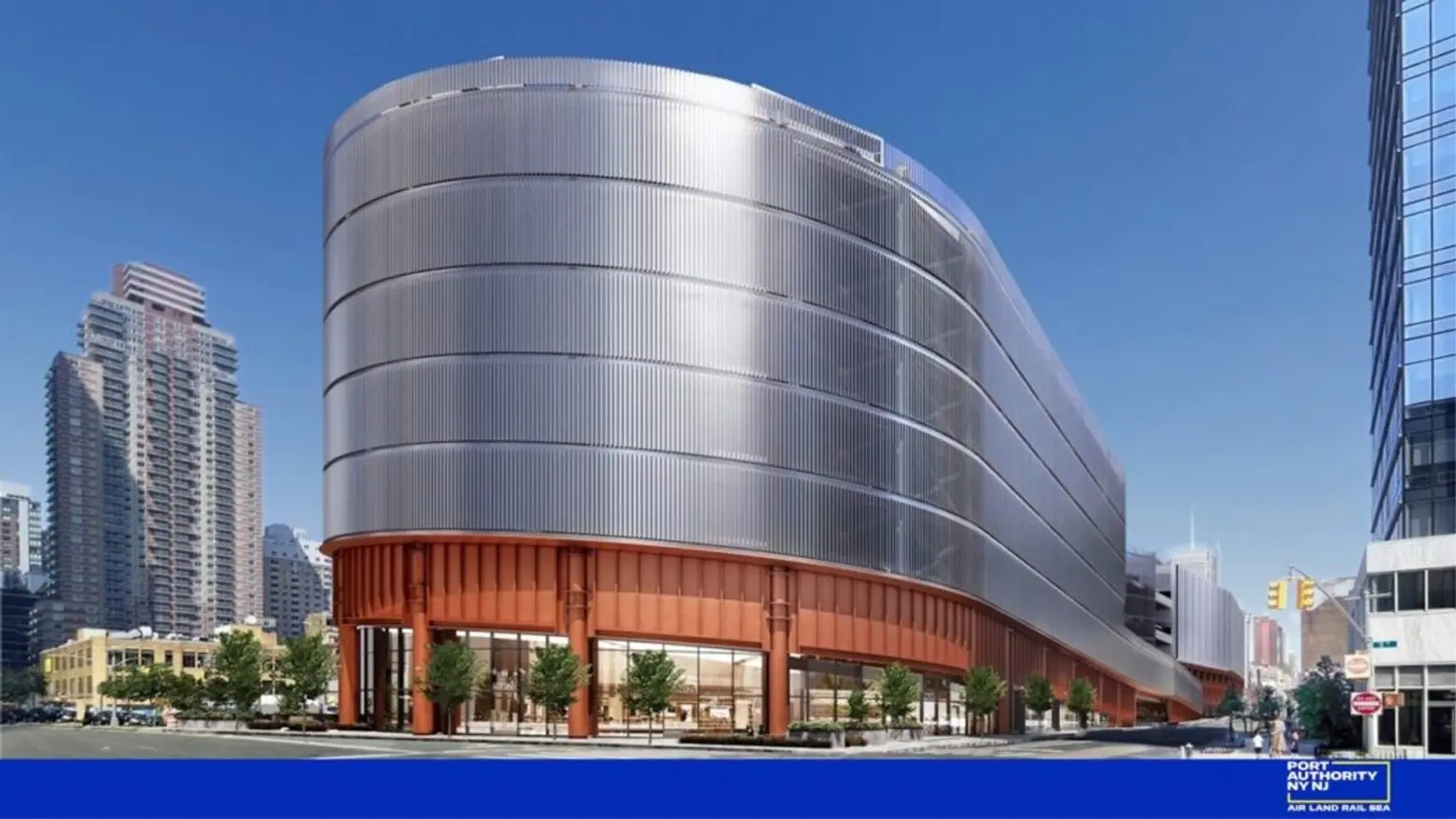
Also part of the first phase is a new 50,000-square-foot ramp structure that connects directly to and from the Lincoln Tunnel. Wider lanes will allow larger buses to travel the route, and a bypass lane will eliminate backups.
“Today’s groundbreaking for the first stage of a new Midtown Bus Terminal is a momentous accomplishment that moved forward after years of delay by focusing on two key propositions — improving the lives of hundreds of thousands of daily commuters and providing real benefits to a community burdened by an architectural eyesore and a deluge of bus traffic,” Rick Cotton, executive director of PANYNJ, said.
“By focusing on benefits both to commuters and the surrounding community, we are now moving forward with a project that enjoys unprecedented support at every level of government on both sides of the river. And at last, we are on our way to creating a gateway that our region deserves.”

The push to replace the dilapidated, 75-year-old terminal began in 2013, aiming to create a modern facility that accommodates growing ridership. Since then, almost 30 separate proposals have been developed.
On an average weekday in 2019, the terminal saw roughly 260,000 passengers on 7,800 buses, making up roughly 23 percent of trips in and out of Manhattan’s core. Officials project that figure could grow to 337,000 by 2040, as reported by Crain’s.
The redesign will feature a new 2.1 million square foot terminal, a separate storage and staging building, and new ramps leading directly in and out of the Lincoln Tunnel, nearly doubling bus capacity, bus speed, and congestion on neighboring streets. The storage and staging facility can temporarily serve as the terminal while crews replace the existing hub.
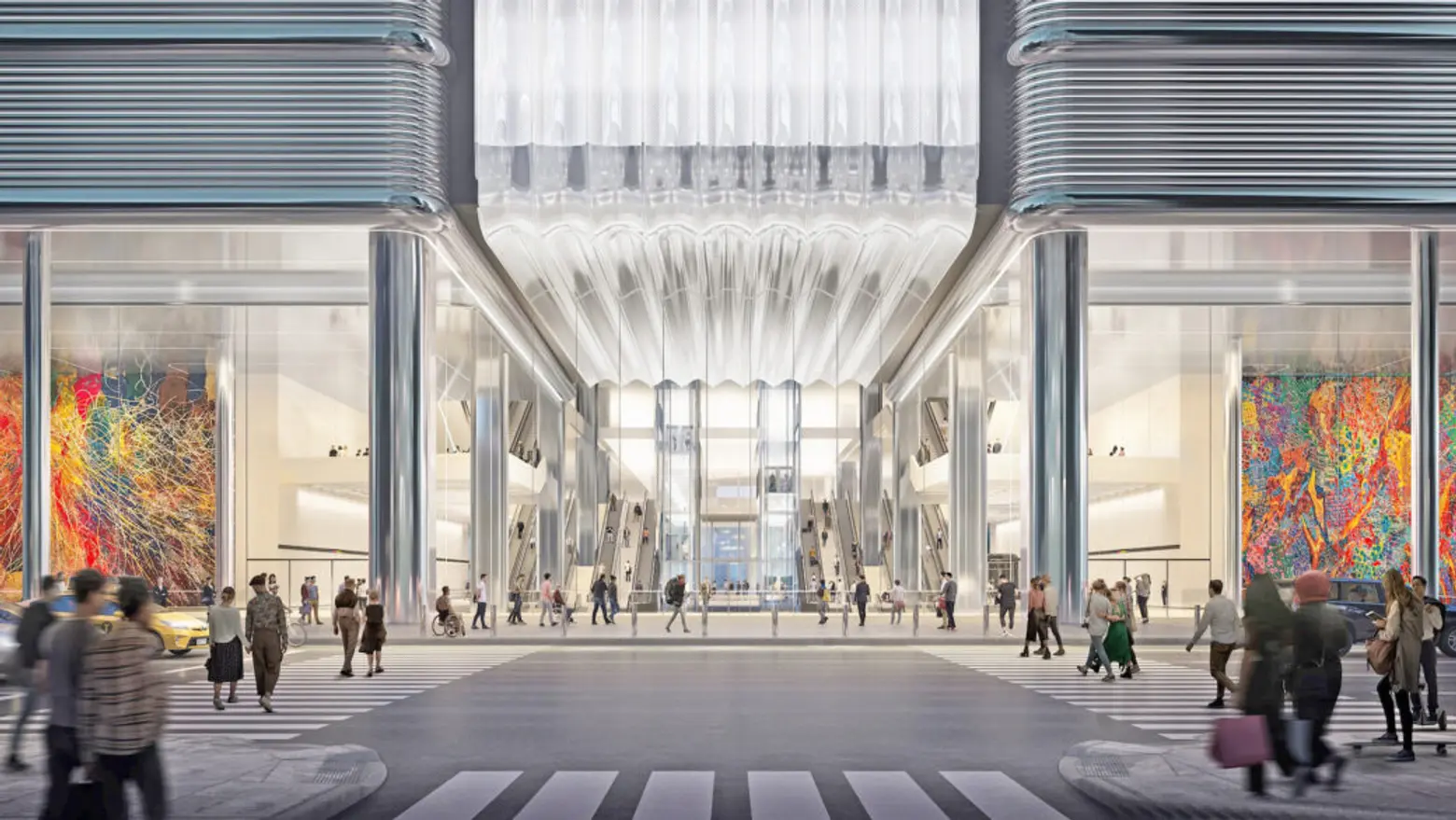
The project will also permanently close a portion of 41st Street between Eighth and Ninth Avenues and includes a central main entrance, additional street-facing retail, and a large multi-story atrium, as 6sqft previously reported.
The design will prioritize sustainability and resilience, aiming to achieve net-zero emissions and accommodate all-electric bus fleets. It will incorporate modern technology throughout, target LEED certification, and feature clean construction methods, onsite renewable energy, zoned heating and cooling systems, and heat recovery and reuse technology.
The project will be partially funded through the redevelopment of two planned commercial skyscrapers on Eighth Avenue at the corners of 40th and 42nd Streets. A third office tower, to rise on a site bounded by West 30th and West 31st Streets between Ninth and 10th Avenues, will also contribute funding. Overall, the project will create roughly 6,000 good-paying union construction jobs.
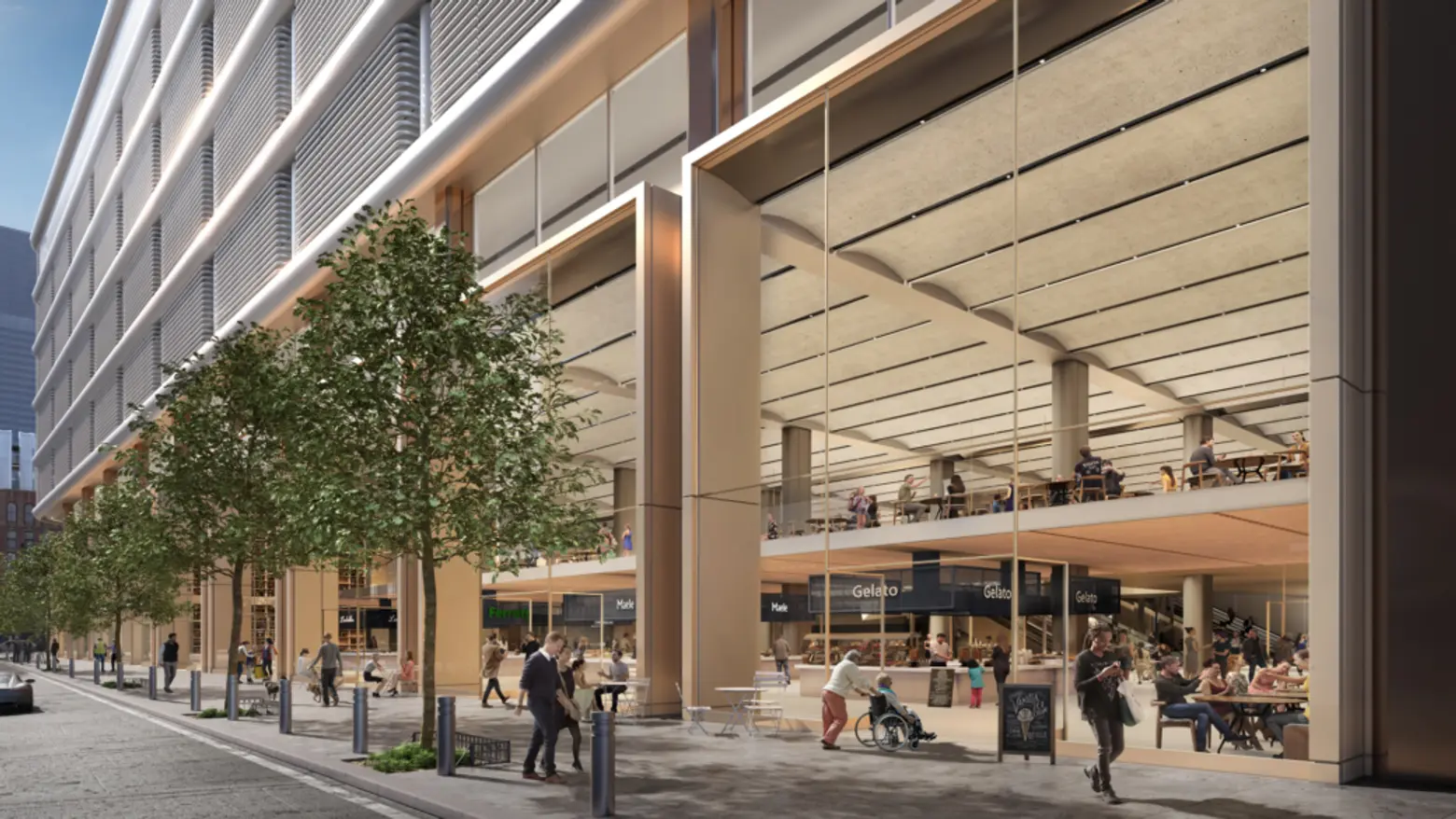
“Here in New York, we are showing the world what is possible when government and the local community commit to making the vision of modern infrastructure a reality,” Hochul said.
“A new Midtown Bus Terminal will deliver an enhanced experience for millions of riders, breathe new life into the surrounding neighborhood and ensure that this gateway to the City is one New Yorkers can be proud of for generations to come.”
In August 2022, the Port Authority tapped the architectural firm Foster + Partners and the engineering and design team Epstein to design the new terminal, with renderings of the project’s current design released in early 2024.
In September, the Port Authority and the Federal Transit Administration signed the final environmental impact statement for the terminal’s redevelopment, marking a key step toward securing a federal record of decision. The signing followed a final round of public hearings that generated more than 700 public comments.
In December, the Federal Transit Administration approved the project and issued a record of decision following an “exhaustive” environmental review. In January, the Port Authority secured a $1.9 billion federal loan for the project, just days before President Donald Trump, who officials feared would halt it, took office.
RELATED:
Source link


